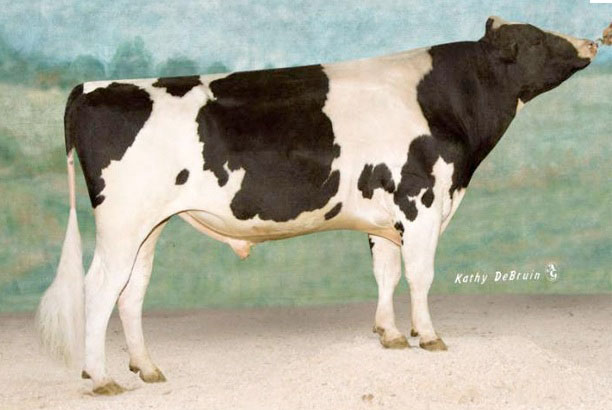Badger-Bluff Fannie Freddie is America’s best Holstein bull. That’s no small feat in a field of 8 million other dairy cows. He’s so fabulous that he already has some 346 daughters on the books. This is considerable being that he was only born in 2004 and his semen was only put on the market a few years ago.
In 2009, the USDA took a look at some 50,000 markers on his DNA that were related to good milk production and officially declared him the best bull for siring milk producing daughters. They made this declaration before he had ever sired any progeny. Now that the first of his daughters have reached milk producing age, the predictions have been proven correct and the USDA’s use of big data has shown that a new sort of 21st century analysis deserves a central place in the US Dairy Industry.
While you might not expect it, dairy breeding is a perfect field for quantitative analysis of the sort that machine learning algorithms can offer today. Taking vast amounts of data and scanning for key information is what these algorithms are created to do. It’s how your Google search works and how online advertisers always seem to know exactly what you were just looking at online. In the dairy world, breeders keep copious pedigree records and sought after dairy cows need exhibit only a few important traits such as milk production, fat in the milk, protein in the milk, longevity, udder quality, all of which are easy to measure and quantify.
The reality is, in the mid-20th century dairy cows would be expected to produce less than 5,000 pounds of milk in a lifetime. Today that number is closer to 21,000 pounds. To reach these increases in output dairy producers have sometimes turned to hormones, but they have increasingly turned to genetics and careful selection of the best bred herd. The technology we have today, and the ability to screen DNA is greatly increasing the speed of a genetic selection process that has long been at work in the industry.
What this means for Badger-Bluff Fannie Freddie is a vast array of progeny scattered all over the country. He is in many ways the epitome of the modern dairy industry. An industry that is increasingly dependent upon technology and data to improve efficiency and effectively feed our growing populations.

